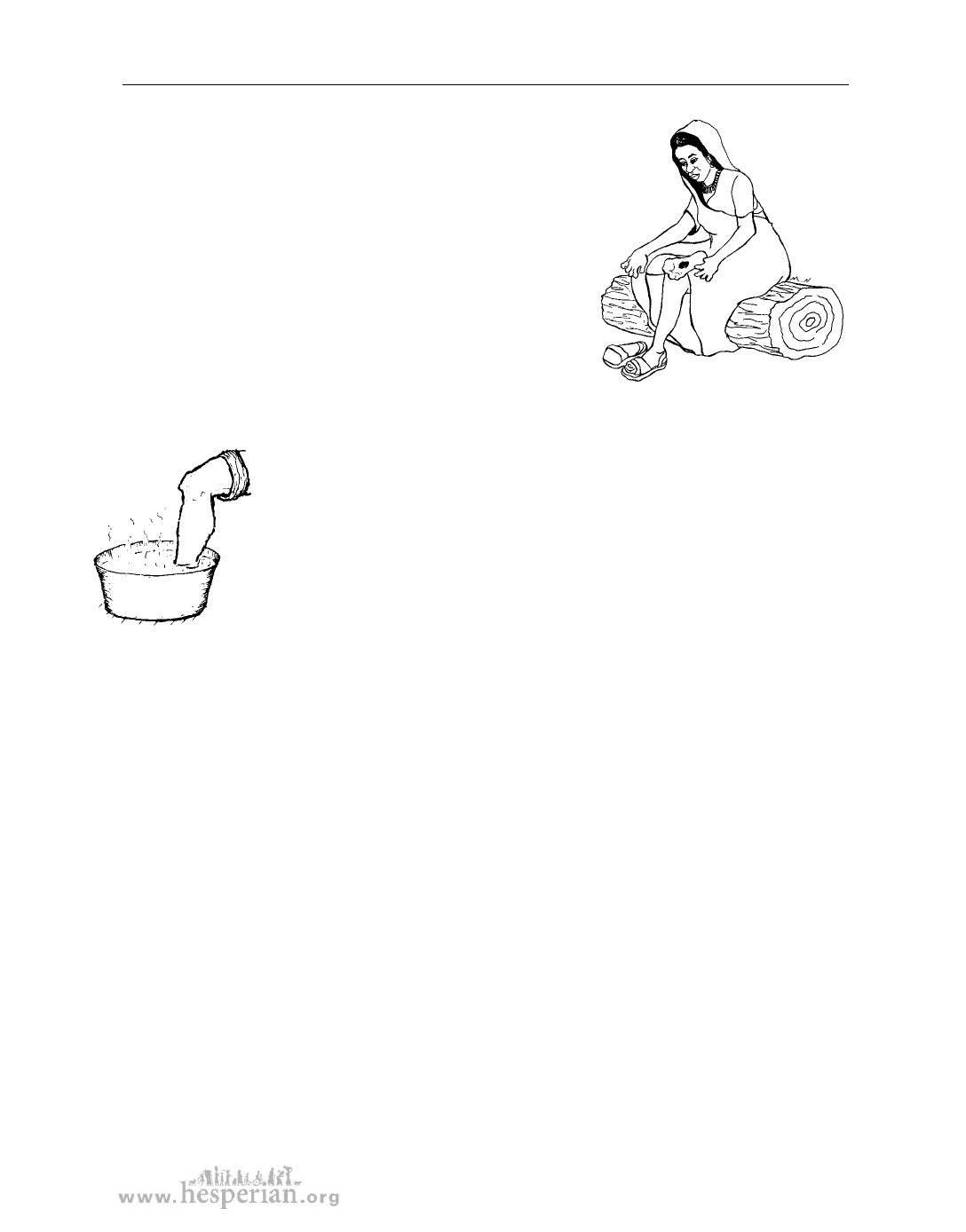
Preventing common health problems 97
Use a small mirror to see the bottoms of your feet.
Or ask someone else to help you. Look for:
• redness, swelling, hot skin, or other signs of
infection.
• cracks, sores, or broken skin.
• pus, bleeding, or bad smells.
• ingrown toenails (the edge of the nail is stuck
inside the skin).
If you feel pain, tingling, burning, or have no
feeling (numbness) in your feet, talk with a health
worker. You may have an infection and need
medicines to make it heal.
To help prevent infection, wash your feet every day with soap
and warm water. First, check the water temperature with your
elbow where you have more feeling, or ask someone with good
feeling to check that it is not too hot for you. Dry your feet well
especially between the toes.
If the skin on your feet gets dry or begins to crack, soak your
feet in water for 20 minutes every day. Then rub vegetable oil,
petroleum jelly (Vaseline), or lotion into them.
Other ways to protect your feet:
• Do not go barefoot.
• Cut your toenails straight across, not rounded, so they will not grow into your
skin (ingrown toenail). And do not let them get so long that they catch and
tear. Ask someone to help you if necessary.
• Make sure your shoes fit well and do not rub the skin and cause blisters or
red areas.
• Check inside your shoes before you put them on for things that could irritate
your feet, such as small rocks, thorns, dirt, or insects.
• Do not sit with your legs crossed. This makes it harder for the blood to flow to
your feet.
• Do not cut corns, calluses, or hard skin from your feet. This can lead to an
infection.
• Wear socks. Make sure socks are smooth and do not rub against your feet. If
you need to mend holes in your socks, try to make the stitches very smooth.
• In hot climates, try to sit with your feet uncovered as often as possible during
the day. This helps your blood circulation and helps prevent skin infection
between your toes.
A Health Handbook for Women with Disabilities 2007